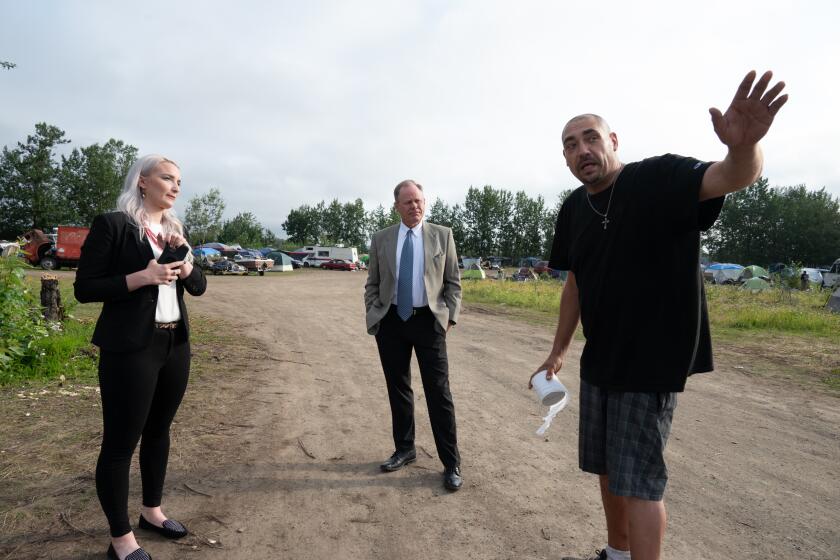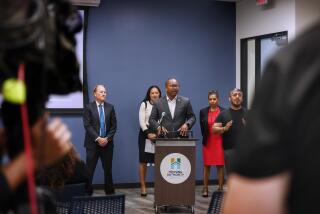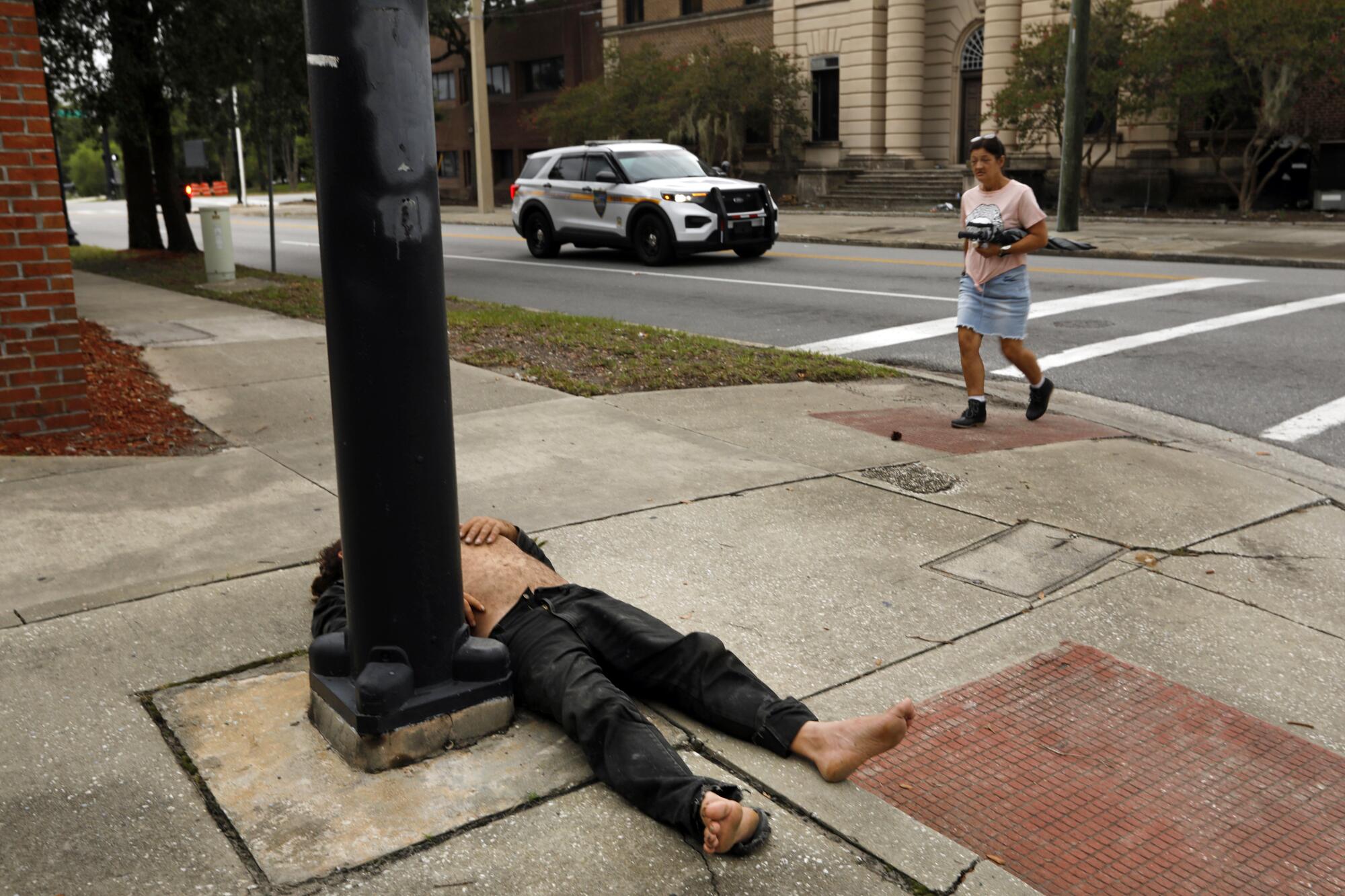
JACKSONVILLE, Fla. — Bulldozers and advertisements throughout this sprawling city herald new pastel homes with gyms, pools and access to nearby beaches — evidence of a boom that has pushed the population here near the 1-million mark.
For most of the last decade, developers and nonprofits in Jacksonville have sought to meet the growing demand, building almost enough houses and apartments to keep even most low-income residents from becoming homeless.
Despite growing by about 17% over the last decade, the three counties in Jacksonville’s homeless service area reduced their count of people on the streets and in shelters by more than half.
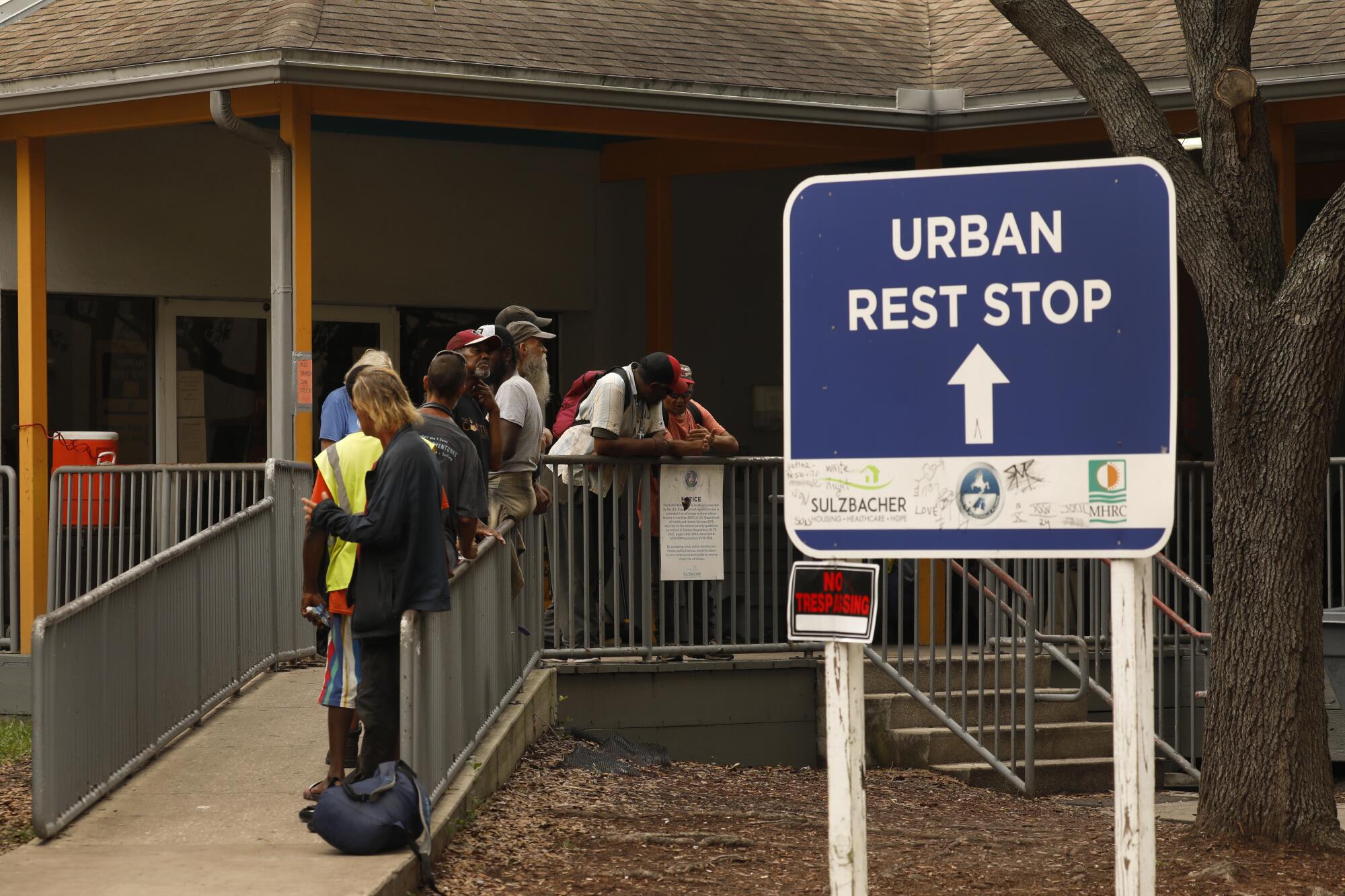
But now local builders and advocates worry the flow of new arrivals is pushing the city past its limit, punishing those at the bottom.
Rent in the metro area rose by more than 20% between April 2021 and April 2022, according to a Redfin survey. Apartment vacancy rates, among the nation’s highest at the onset of the boom, are shrinking, according to data from the National Assn. of Home Builders. The waiting list for housing assistance has grown to about 120,000 from about 20,000 before the pandemic, as workers in the region’s service economy were hit particularly hard, said Dwayne Alexander, president and chief executive of the Jacksonville Housing Authority.
An Alaska mayor wants to send homeless people to Los Angeles. Here’s what they have to say about that.
A cautionary tale — an unfettered homeless crisis — is lurking more than 2,000 miles away, on the other end of Interstate 10.
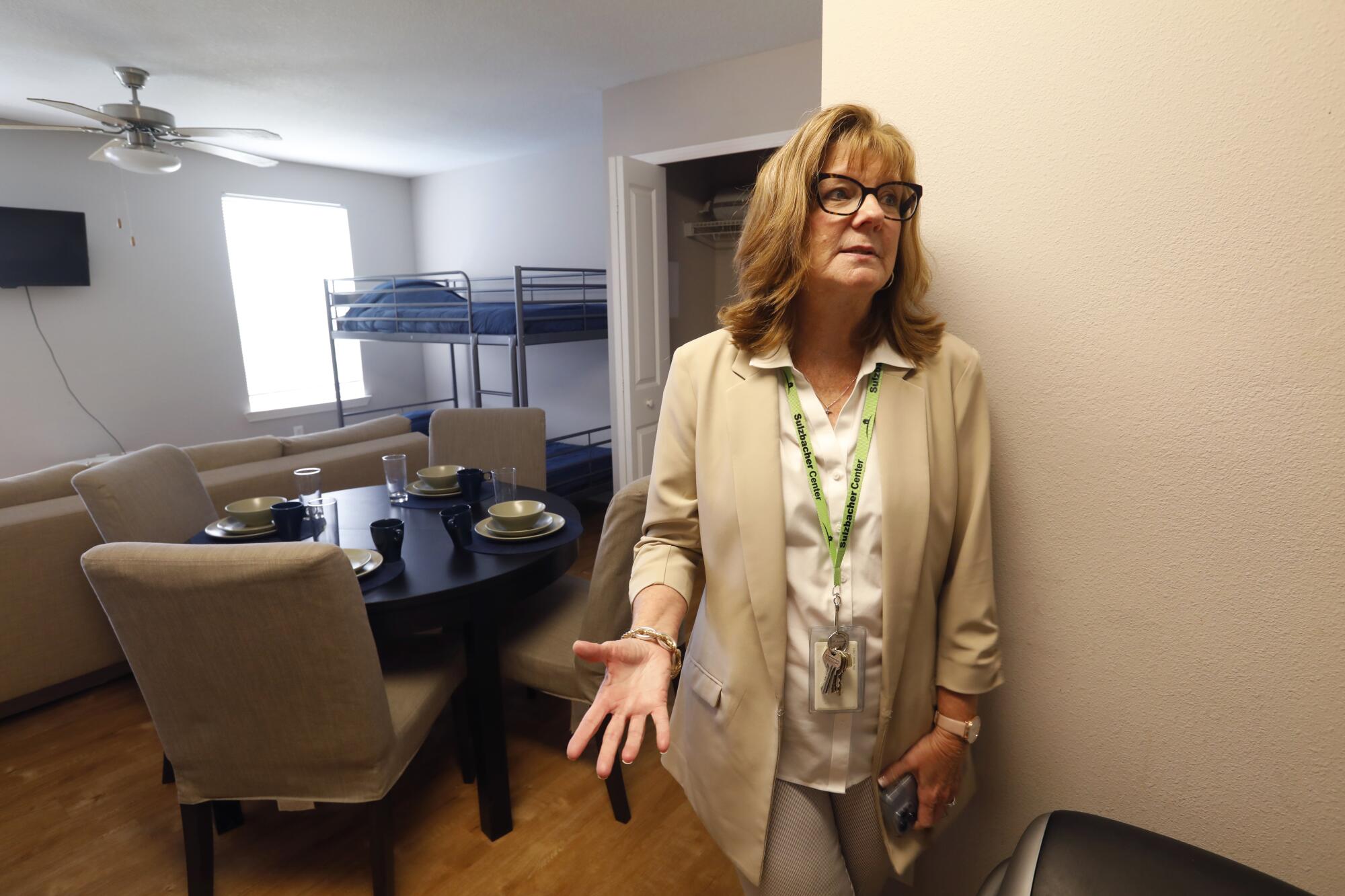
“We can’t be L.A.,” said Cindy Funkhouser, president and CEO of the Sulzbacher Center, the city’s largest homeless services provider. “We’re kind of, you know, at a fork in the road here, and either we start building more affordable housing, and we cut this off, or we could go either way.”
For now, that’s a distant scenario. Volunteers and outreach workers counted 1,247 people on streets and in shelters during the region’s most recent homeless census, a pittance compared with the more than 75,000 estimated to be homeless in Los Angeles County’s most recent census. L.A. County has about eight or nine times the number of homeless people per capita compared with Jacksonville’s three-county homeless services area, based on local estimates and census data.
The public tends to blame L.A.’s high levels of homelessness on poverty, drug use, crime or even Southern California’s warm weather. But poverty, drug use and crime are challenges for many American cities with far fewer homeless people than L.A. Like many of those places, warm-weather Jacksonville doesn’t have L.A. levels of street homelessness mostly because it has more available housing.
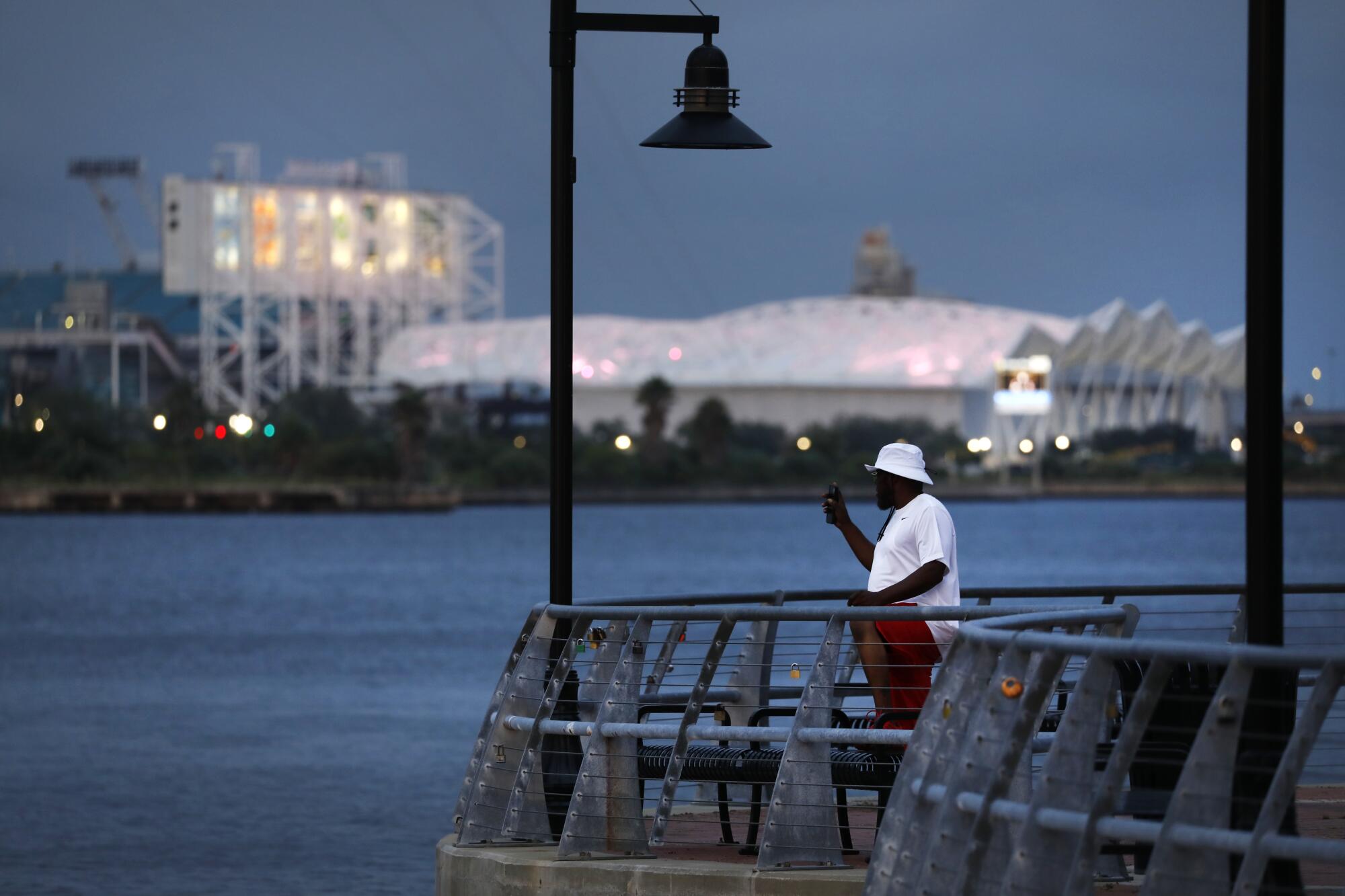
Jacksonville, with a landscape dominated by the St. Johns River and a series of interstate highways that divide neighborhoods by race and class, is the biggest city by landmass in the lower 48 states. Abundant land, cheap housing and proactive local safety net programs have helped the city reduce its homeless population over the last decade.
Alex Sifakis’ company, JWB Real Estate Capital, doesn’t work directly with homeless people, but his for-profit business model helps explain why Jacksonville has had a relatively fluid real estate market.
Subscriber Exclusive Alert
If you're an L.A. Times subscriber, you can sign up to get alerts about early or entirely exclusive content.
You may occasionally receive promotional content from the Los Angeles Times.
His company buys up lots in old neighborhoods, often for $30,000 or $40,000, builds houses or townhomes for an average of $170,000 and then rents them out to working-class families for $1,300 to $1,800 a month.
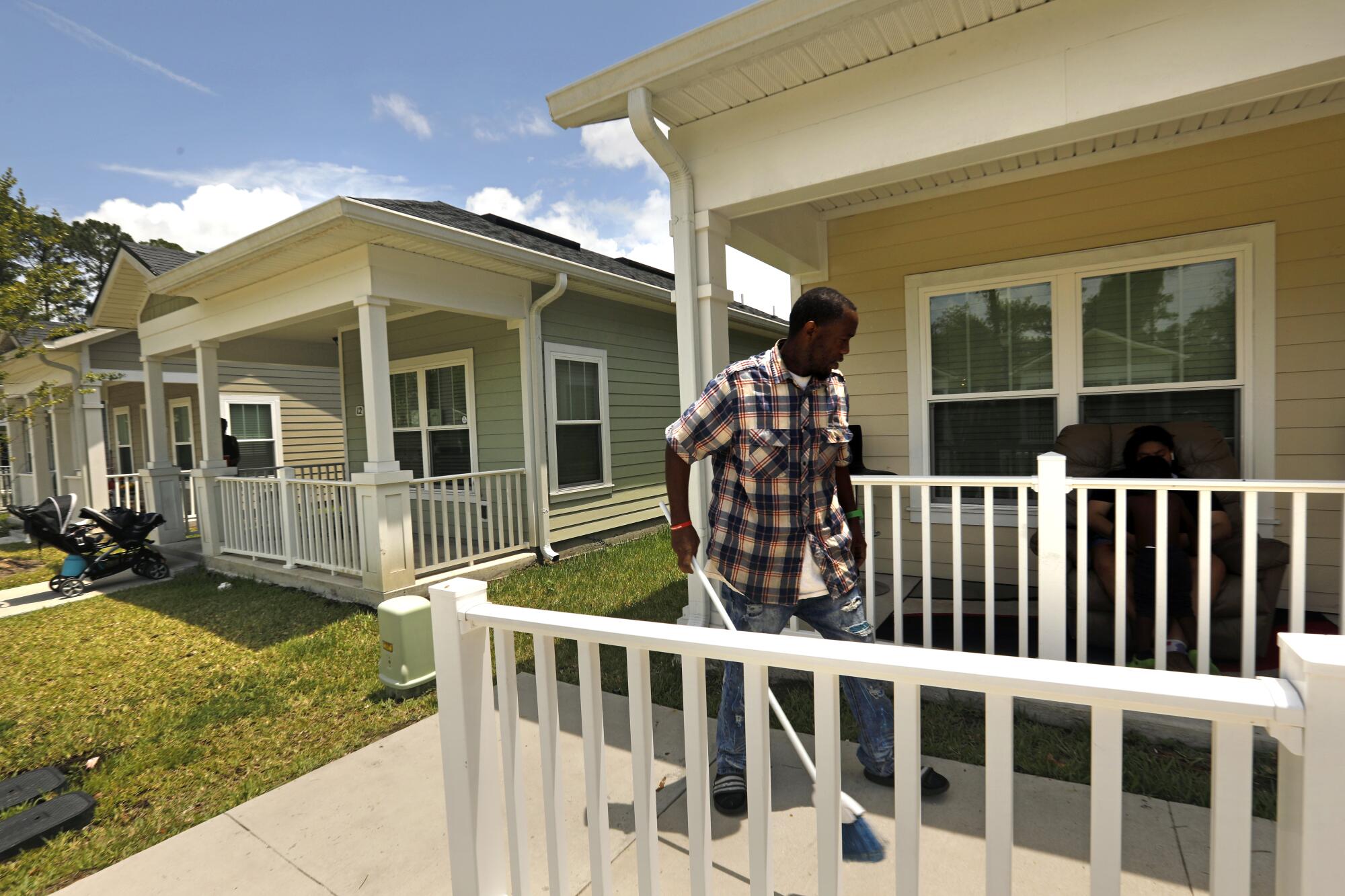
Housing and homeless specialists say cities benefit from having more affordable homes on the market, even if those houses and apartments aren’t directly rented to unhoused people. Housing is often compared to a game of musical chairs. The more seats available, the fewer people get eliminated.
But there’s a caveat: People at the higher end usually have a head start when the music stops playing, while those who make less money — especially people who struggle with drug or health problems — end up battling for the final seats.
On a recent afternoon, Sifakis showed off a typical home — four bedrooms, clean gray wood laminate floors, a modern one-car garage, new appliances. The neighborhood around it is far from the fancy new subdivisions — some lots are occupied by collapsing trailers; others are well-kept.
His company manages 5,600 homes and townhouses like this one, almost all owned by investors. It’s a niche that does not really exist in Los Angeles, in part because undeveloped land is much more scarce and construction costs are higher.
Subscribers get early access to this story
We’re offering L.A. Times subscribers first access to our best journalism. Thank you for your support.
The closest things Los Angeles has are granny flats or in-law apartments, backyard dwellings often built by individual homeowners, which are relatively easy to permit after the Legislature approved recent laws designed to encourage them. But building a one-bedroom unit from scratch in L.A. can cost more than Sifakis spends on an entire house — about $225,000 to $300,000, not including land, according to Anthony Dedousis, chief executive of Revival Homes, a lending platform and contractor marketplace for California homeowners building the units.
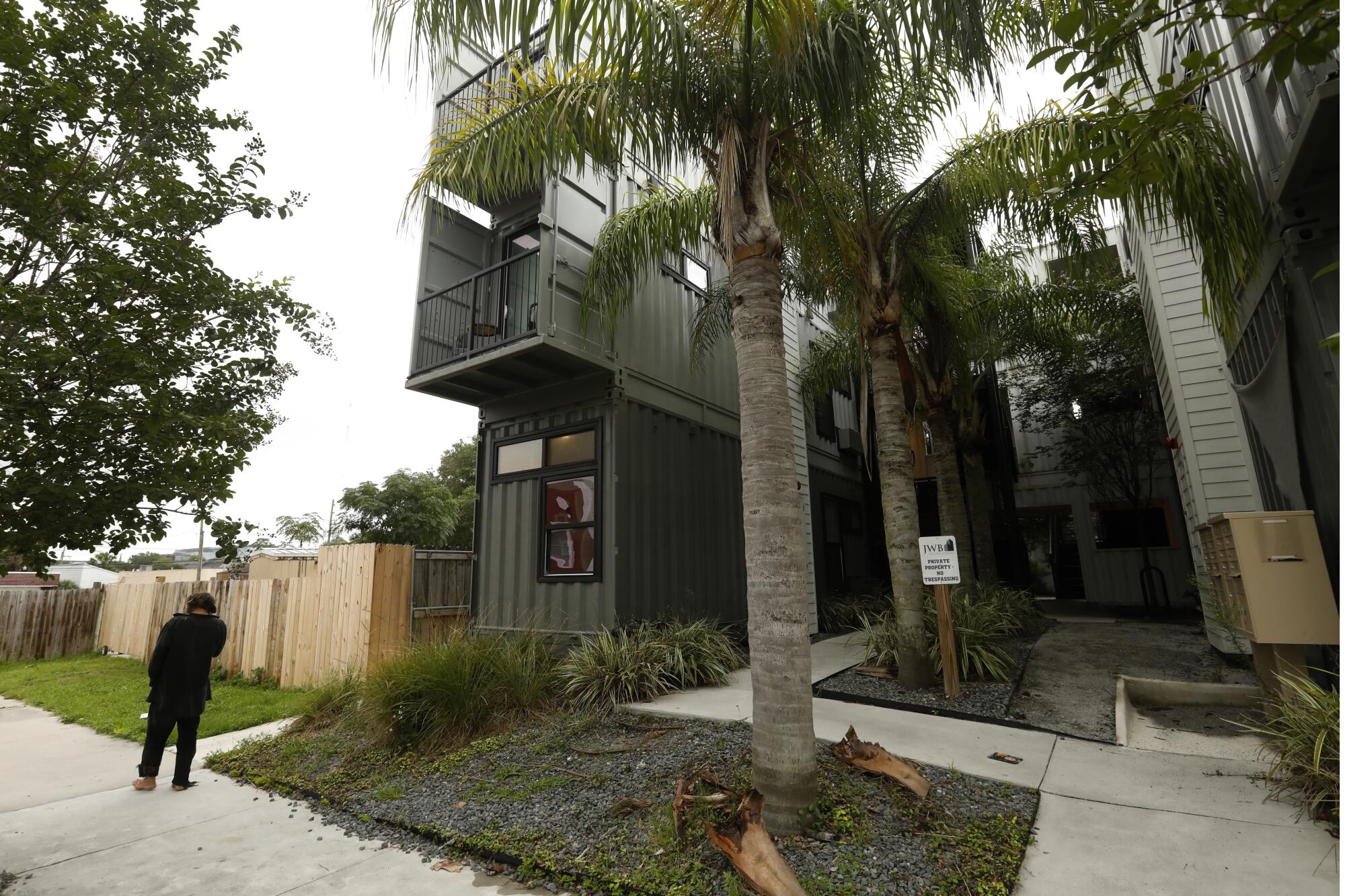
Los Angeles and other big cities should follow Jacksonville’s lead and beef up their supply of “the missing middle” housing: duplexes, townhouses and small apartment buildings in walkable neighborhoods, Sifakis argued. His company builds in older neighborhoods, with existing roads and sewer lines, and seeks zoning that allows higher density, which lowers his costs. As a result, his homes tend to be more affordable for people at lower-income levels who do not meet federal definitions of poverty.
Destanee Watson, a 29-year-old receptionist, is renting one of Sifakis’ apartments, a 320-square-foot shipping container, part of an experimental 18-unit building in the heart of downtown. It’s spare, with barely enough room for her to lay a mattress on the floor. But it has a kitchen, a micro balcony and a washer and dryer, and it’s “brand spanking new,” she said.
So Watson was willing to fork over an extra large security deposit to overcome credit issues and about half of her income every month in rent, more than she was paying elsewhere, to stay close to work.
Her only complaint: Too many homeless people congregate in the area, making her feel unsafe.
Her downtown neighborhood is a gathering place, in part because it’s near shelters and a free health clinic that caters to people who lack homes.
One recent morning, around the corner from Watson’s home, Michael Jones was using a leaf blower to clear a man from his front sidewalk.
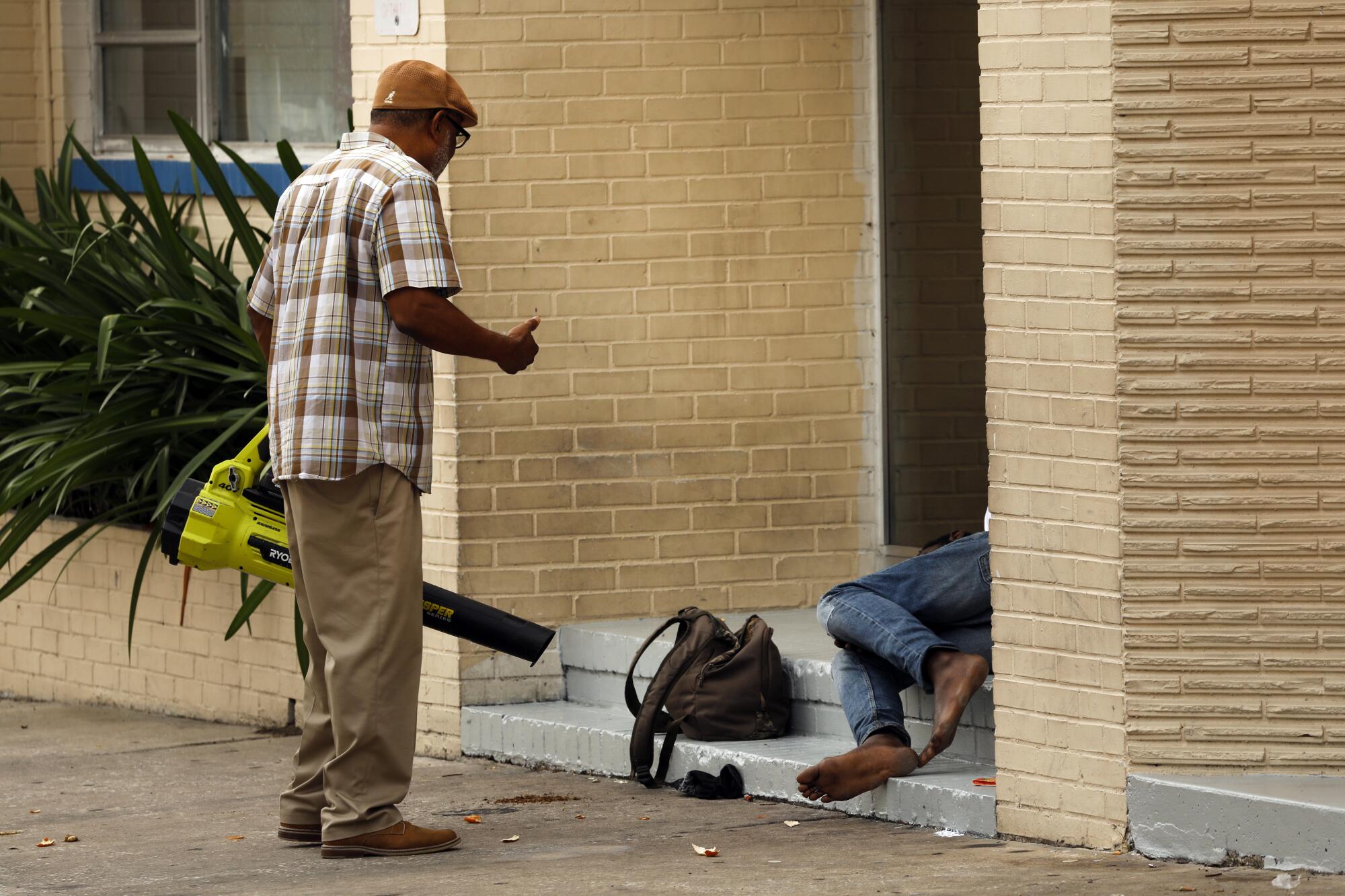
Jones, who was once homeless himself, said he sympathizes with his unhoused neighbors. But he’s sick of cleaning up messes and needs a clear sidewalk when his counseling business opens every day, he said.
He knows the official homeless numbers are down but he is seeing more unhoused people who he believes are going uncounted, he said.
Many have mental health issues that he’s “basically never seen before — I mean, on this level, you know, schizophrenia, bipolar, all kinds of disorders.”
The backlash against homeless people is partly the result of their increased visibility in the downtown area, which has fewer residences than other parts of Jacksonville and can look more desolate when office workers are doing their jobs from home.
Sifakis worked with the city and local homeless providers to place people in a warehouse he owns after the city broke up an encampment of about 100 to 200 people in 2021. Homeless advocates scrambled to find hotels and other emergency housing. This year, the City Council passed an anti-panhandling ordinance. Homeless people on the street said in interviews that they are regularly pushed out of public areas by police.
Homeless advocates and local builders say the problem is a collective one that requires more government incentives in the form of cash or zoning breaks to build affordable places to stay.
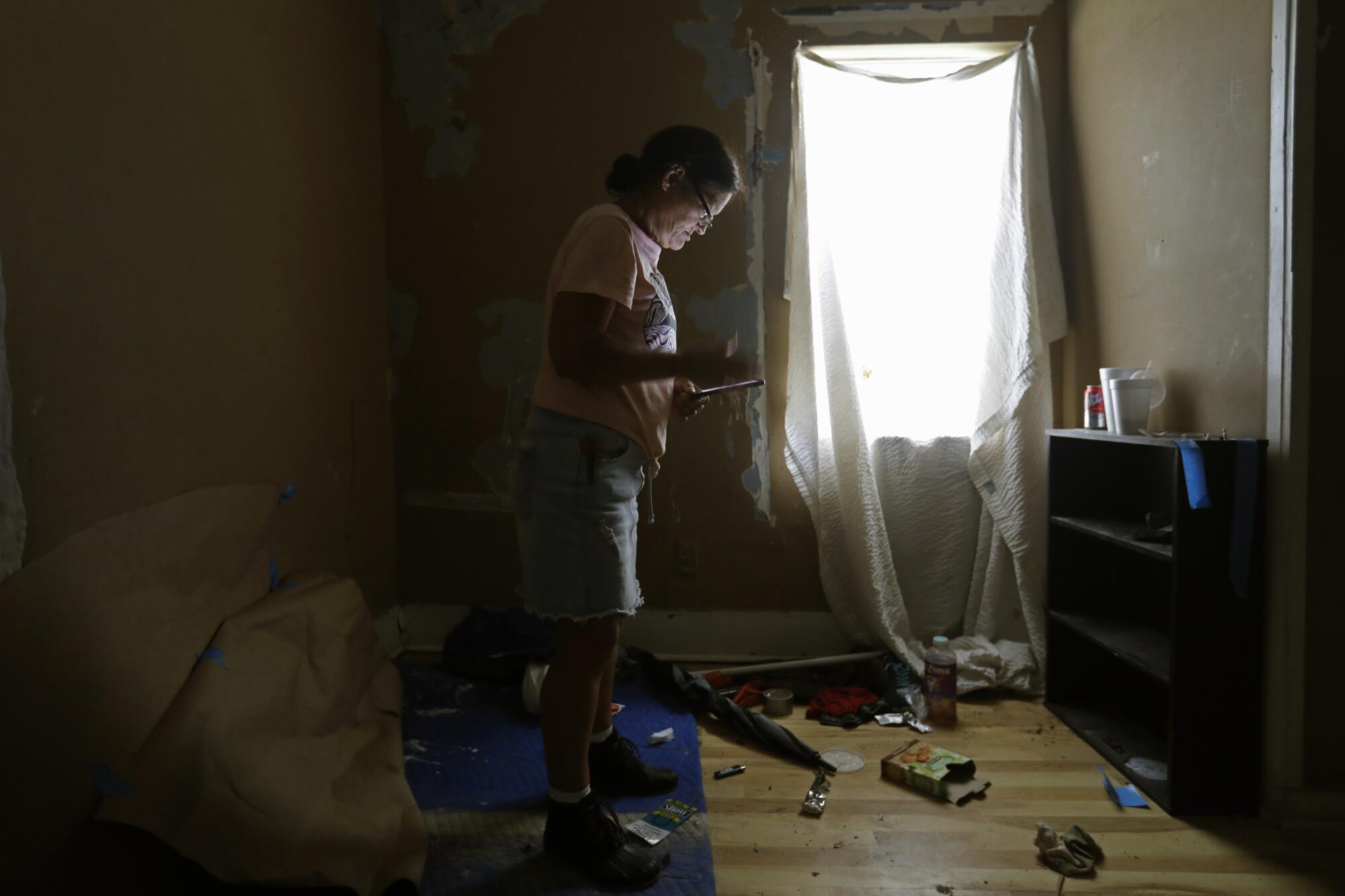
“Homelessness is a housing issue. I mean, by definition, it’s a housing issue,” said Shannon Nazworth, who runs Ability Housing, the region’s only nonprofit developer of low-income housing. Her group manages low-income housing, including a community of tiny houses built by the local chapter of Habitat for Humanity that opened in 2021.
“Florida’s had such a massive population growth that the housing supply and demand is totally skewed,” she added. “So whenever you have pressures on a market, the pressures are going to push down to the lowest income the most.”
As California’s population has fallen in recent years, Florida’s has grown. But despite Florida’s increase of new arrivals during the pandemic, its official homeless count actually decreased between 2020, when it was more than 27,000, and 2022, when it was just under 26,000. The 2023 numbers may tell a different story.
The most financially vulnerable people cannot live in Sifakis’ apartments without ongoing help from government programs, homeless specialists say.
Building apartments for people who make 50% to 80% of the median income “certainly helps the overall housing picture,” said Samantha Batko, the lead homelessness researcher at the Urban Institute, a Washington think tank. “Whether or not that immediately translates into people experiencing homelessness accessing a unit is a question,” Batko said.
Like many communities around the country, Jacksonville has shifted how it spends public assistance money — away from temporary shelters in favor of longer-term housing with ongoing support for people most in danger of losing their homes. Batko credits recent success in curbing homelessness to that change.
Funkhouser, of the Sulzbacher Center, has helped lead Jacksonville’s shift away from a shelter-based strategy.
But as she gave a tour of the bustling day shelter known as the Urban Rest Stop, she expressed worry. Lunchtime was approaching and people were beginning to gather, including a man dragging an injured foot who had been wandering the city after sleeping on the sidewalk.
“There’s more people coming into the pipeline,” she said. “You’re going to have a problem if everyone doesn’t start building more housing.”
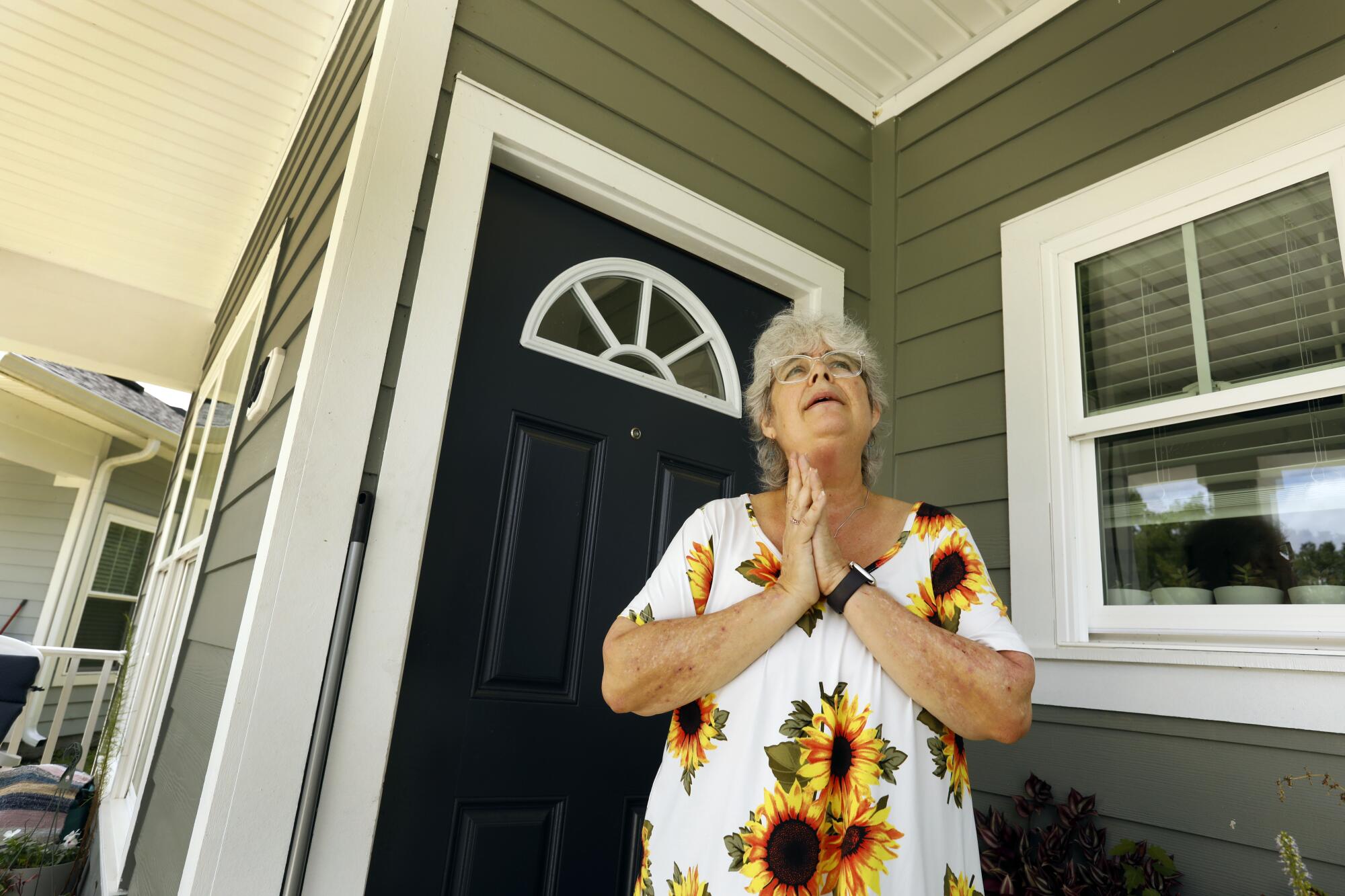
More to Read
Subscriber Exclusive Alert
If you're an L.A. Times subscriber, you can sign up to get alerts about early or entirely exclusive content.
You may occasionally receive promotional content from the Los Angeles Times.

